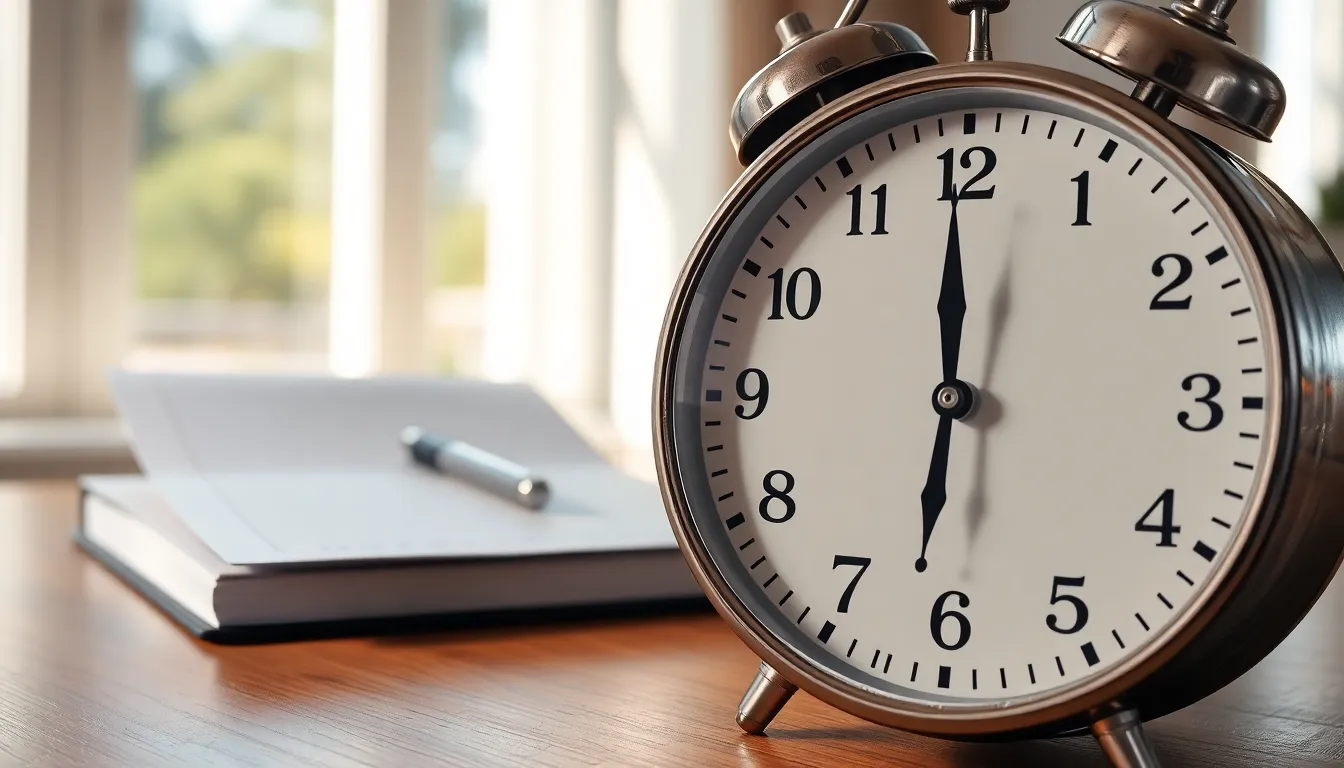Time is a constant companion in our daily lives, guiding schedules and shaping routines. Yet, there are moments when understanding time becomes a puzzle, especially when trying to calculate how long until a specific hour. For those curious about the countdown to 1:21, whether it’s for a meeting, a favorite show, or a special event, knowing the exact duration can be crucial.
This article dives into the various ways to determine the time remaining until 1:21. It explores practical methods and tools that simplify this calculation, ensuring readers can easily grasp how long they have to wait. With a clear and concise approach, it aims to demystify the concept of time and provide valuable insights for anyone needing to know how long until that specific moment arrives.
Understanding Time Queries
Understanding time queries enhances the ability to manage schedules effectively. Time queries involve calculating time differences, determining durations until a specified hour, or converting time formats.
Methods for Time Calculation
- Identify Current Time: Knowing the exact current time provides a clear starting point for calculations.
- Determine Target Time: Establish the specific target time, such as 1:21.
- Calculate Difference: Subtract the current time from the target time to find the duration until the specified hour.
Tools for Time Management
- Digital Clocks: Use digital clocks to get real-time updates on current time.
- Smartphone Apps: Several mobile applications simplify time calculations and reminders.
- Online Calculators: Websites offering time difference calculators can provide instant results.
Using these methods and tools makes it easier to manage time-related queries, ensuring punctuality for events or appointments.
The Concept of Time

Understanding time plays a crucial role in daily activities and scheduling. Clarity about how time intervals work aids in efficient time management.
Defining Time Intervals
Time intervals represent the measurable duration between two points in time. They can exist in various formats, such as seconds, minutes, and hours. For example, a time interval of 60 minutes indicates one hour. Identifying how many minutes or seconds remain until a specific time, such as 1:21, helps manage commitments better.
Importance of Time Calculation
Time calculation ensures punctuality, which enhances productivity in professional and personal settings. It assists in planning activities accurately, allowing individuals to arrive on time for meetings or events. Effective time calculations, like differentiating between AM and PM, contribute significantly to overall time management. Techniques for calculating time differences, such as subtracting the current time from the target time, simplify scheduling and reduce the risk of missed appointments.
How Long Till 1:21
Calculating time until a specific hour, like 1:21, involves clear methods and practical examples. This section delves into effective techniques for determining the duration and offers relatable instances.
Methods of Time Calculation
- Identify the Current Time: Check the clock or use a digital device to determine the present time accurately.
- Determine the Target Time: Establish the aiming hour, which in this case is 1:21.
- Calculate the Difference: Subtract the current time from the target time to find the interval. For instance, if it’s currently 12:45, subtract this from 1:21. The result would be 36 minutes.
- Use Digital Tools: Leverage apps or online calculators that automatically compute the duration. Input current and target times to receive instant results.
Examples of Time Duration
| Current Time | Target Time | Duration |
|---|---|---|
| 12:00 | 1:21 | 1 hour 21 minutes |
| 12:30 | 1:21 | 51 minutes |
| 12:55 | 1:21 | 26 minutes |
| 1:00 | 1:21 | 21 minutes |
| 1:15 | 1:21 | 6 minutes |
Examples illustrate various scenarios showing how long until 1:21 from different starting points. Knowing these durations aids in better time management for appointments or events.
Practical Applications of Time Management
Effective time management skills help individuals leverage their time to achieve personal and professional goals. Knowing how to calculate time until specific moments, such as 1:21, enhances punctuality and efficiency.
Scheduling Meetings
Scheduling meetings requires accurate time calculations. For example, if a meeting starts at 1:21 and the current time is 12:50, calculating the difference (31 minutes) aids in planning preparation time. This strategy helps in allocating resources effectively and ensuring all participants arrive on time.
Planning Daily Activities
Planning daily activities becomes simpler with clear time management techniques. By assessing how much time remains until 1:21, individuals can prioritize tasks. For instance, if the next activity takes 20 minutes and it’s currently 12:55, knowing there’s only 26 minutes until 1:21 enables them to adjust their schedule accordingly.
Setting Reminders
Setting reminders across various digital platforms enhances time awareness. A reminder set for 10 minutes before 1:21 ensures readiness for an upcoming event. Reminders provide visual cues, allowing individuals to stay on track and reduce last-minute rushes.
Utilizing Time Management Tools
Using time management tools, such as apps and online calculators, simplifies the process of time calculations. These tools can automatically determine the duration until 1:21 based on the current time, minimizing errors. For instance, inputting the current time into an app can instantly show remaining minutes, fostering proactive scheduling.
Enhancing Productivity
Enhancing productivity relies on understanding time intervals. By mastering how to calculate time until specific moments, individuals improve workflow efficiency. If the objective is to complete a task before 1:21, knowing the available time allows for focused effort and minimizes distractions.
Evaluating Performance
Evaluating performance through time management incorporates assessing completed tasks against set timeframes. If a goal is to finalize a project by 1:21, measuring productivity before that deadline helps individuals identify areas for improvement. Establishing clear metrics based on time intervals fosters accountability and motivates timely completion.
These practical applications demonstrate that mastering time management translates into better organization, increased efficiency, and improved outcomes in daily life.
Understanding how long until 1:21 is more than just a simple calculation; it’s a vital skill for effective time management. By mastering the techniques outlined, individuals can improve their punctuality and enhance their productivity in various aspects of life.
Utilizing tools like digital clocks and smartphone apps can make this process even easier. With the right approach, anyone can confidently manage their schedules and ensure they meet their commitments.
Time is an invaluable resource, and knowing how to calculate intervals can lead to better organization and efficiency. Embracing these strategies can empower individuals to take control of their time and achieve their goals with greater ease.





